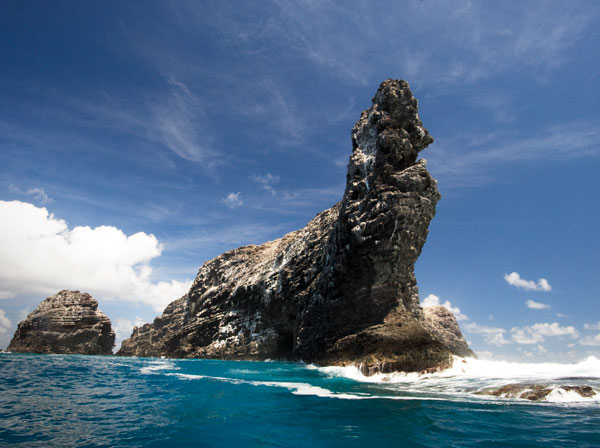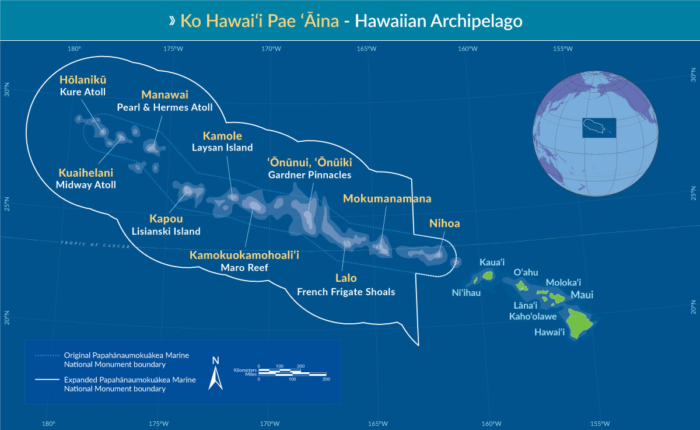
Celebrating the Expansion Anniversary of Papahānaumokuākea Marine National Monument

Photo credit: Wayne Levin
On August 26, 2016 President Barack Obama expanded Papahānaumokuākea Marine National Monument, enlarging what was already the largest contiguous protected area in the United States and one of the largest marine protected areas on the planet. Currently, the monument is recognized globally as a UNESCO World Heritage Site and protects 582,578 square miles of the Pacific Ocean — an area larger than all of America’s national parks combined!
History
The Northwestern Hawaiian Islands have been culturally important to Hawaiian people for thousands of years and is critical habitat for species of seabirds and marine mammals. In 2006, President George W. Bush established Northwestern Hawaiian Islands Marine National Monument to ensure cultural access to the Northwestern Hawaiian Islands for native cultural practices, protect endangered species and the final resting place of historic wrecks, and preserve this untouched remote site for generations to come. The newly established monument merged the Northwestern Hawaiian Islands Coral Reef Ecosystem Reserve (established by President Bill Clinton), the Midway Atoll and Hawaiian Islands National Wildlife Refuges, the Battle of Midway National Memorial, Kure Atoll Wildlife Sanctuary, and the Hawai’i State Northwestern Hawaiian Islands Marine Refuge. NOAA, the U.S. Fish and Wildlife Service, and the State of Hawai’i co-manage the site to ensure the resources it protects are properly monitored and managed.
In 2007, the Monument got its new name: Papahānaumokuākea Marine National Monument. The name is a blend of two Hawaiian Ancestors – Papahānaumoku and Wākea – who, according to legend, gave rise to the Hawaiian islands and the Hawaiian people. On July 30, 2010, the United Nations Educational, Scientific and Cultural Organization’s (UNESCO) recognized Papahānaumokuākea Marine National Monument as a mixed (natural and cultural) world heritage site, one of only a few dozen in the entire world!
For a full history of protections in the Northwestern Hawaiian Islands since 1903, click here.
Expansion

On August 26, 2016, President Barack Obama expanded the Monument to provide additional protection for geological features like seamounts, submerged reefs, and sunken islands, and to expand protections for natural resources such as marine mammals, fish, and coral reefs. President Obama cited the unique geology, cultural importance, and wildlife in his proclamation, including more than 75 seamounts (and a non-volcanic ridge that extends southwest towards the Johnston Atoll Seamounts), ridges, and other undersea topographic features that help marine organisms survive and navigate the area’s waters. Additionally, he cited the islands’ importance in helping populations of Hawaiian monk seals and endangered seabirds to recover, the fact that 24 species of whales and dolphins call the monument’s waters home, serving as the final resting place for sunken World War II aircraft and shipwrecks from times before written records, and its significance to Native Hawaiian culture.
The expansion, which made the site the largest protected area on the planet, brought attention to the Northwestern Hawaiian Islands and underscored the need for ocean conservation and protection globally. Three years later, the site serves as an important area for research and exploration, conservation, and reminding people of the problems facing our global ocean such as plastics pollution.
Unfortunately, Papahānaumokuākea is difficult to visit and not open to the public — but that doesn’t mean you can’t see the sheer wonder of it all! Click here to pay a virtual visit to the islands within the Monument’s boundaries!
